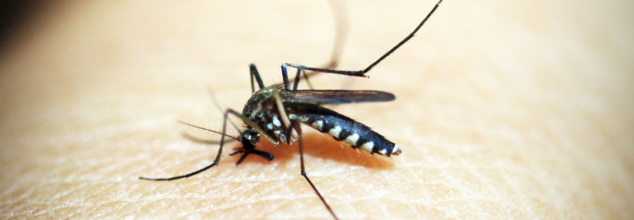
Credits: Canvadis
Dengue Cases Surge In Different Parts Of The Country
As the country grips with other diseases, including two confirmed Mpox cases who have been isolated and reported stable, India is now battling with dengue. It is a viral disease spread by mosquitoes that can cause a range of symptoms from mild to severe, including headache, fever, vomiting, muscle or joint pain and skin rashes. The symptoms usually appear only 3 to 14 days after infection.
With monsoon receding and the transitional weather, along with other diseases, dengue too is making rounds.
Manipur
Manipur Health and Family Welfare Minister Sapam Ranjan on Sunday said that dengue cases are rising in the case with it being 148 in August and going up to 230 in September so far.
The minister also stressed the need for community participation the fight against the disease. This is an urge to be more vigilant and now allow spaces to become mosquito breeding grounds and let the authorities inspect in case breeding grounds already exist.
Chandigarh
As of now, Chandigarh has reported 722 cases of dengue, with Panchkula leading with 503 reported cases. The health authorities have also warned the residents to practice extreme caution as the dengue cases have a record of spiking from September onwards.
Along with dengue, many other cases of fever, cough and cold are also being reported in the OPDs and a sampling of around 20 to 30 patients is being done daily, and they are tested for dengue and malaria. Chikungunya is too on the rise, along with cases of influenza and typhoid.
Jammu
The Union Territory of Jammu and Kashmir also reported around 1,000 reported cases of dengue, with more than 60% of the cases from Jammu.
As per the reports, 11,254 tests were carried out across J&K, out of those, 1056 turned out positive. Among these cases, Kashmir only reported 9 positive cases of dengue.
Jaipur
The number has significantly gone up with the city reporting 272 new cases in 28 days, bringing the total count of dengue cases in Jaipur at 532. The SMS Hospital reports a sporadic rise in the cases of chikungunya too, with five cases of it being reported in the past three to four days.
Mumbai
Mumbai is also witnessing a rise in dengue cases with 1,718 cases reported between July and mid-September. Here too, other seasonal viruses and diseases like Chikungunya, H1N1 were reported, however, the good news is that these cases have dropped.
However, Hyderabad is facing a third major outbreak of chikungunya in a decade with unusual symptoms showing up. The symptoms include skin pigmentation around the nose, dengue-like rashes and altered taste.
Bengaluru
The state of Karnataka has recorded 25,408 dengue cases with the death toll raised to at least 12 as of September 3 as per the data released by the health department of Karnataka.
In a recent case from Bengaluru, a 6-year-old girl who had bouts of fevers died within 48 hours of developing dengue. She is the first of two children who have died of dengue in a week's time in the city.
As per the parents the child had developed a fever and was given Dolo 250, after which she slept. However, the next day in the evening, she started to vomit and was taken to a hospital, where the parents learning that the child had fits. She tested positive for dengue, however, her 2.87 lakh platelet-count posed no immediate danger.
However, her condition deteriorated and she was out of breath and had to be placed in a ventilator. Her brain activity came down to 10% and doctors had informed the parents that the chances of survival were bleak. Her brain stopped working and her body experienced a multiple organ failure.
Dengue Variants
There are four dengue virus serotypes - DENV-1, DENV-2, DENV-3, and DENV-4. This means a person can be infected four times.
DENV 2 is the most serious variant causing the most fatal symptoms. It includes vomiting, abdominal pain, high fever, restlessness, confusion, bleeding gums and nose. It can also lead to dengue haemorrhage syndrome (DHS) and dengue shock syndrome (DSS).

Image Credit: Getty
New NIH Director Jay Bhattacharya Commits To ‘Humane’ Reforms, Ending 'Censorship & Distrust' In Research
Dr. Jayanta "Jay" Bhattacharya, has officially assumed office as the 18th Director of the National Institutes of Health (NIH), bringing a new era of leadership to the country's leading medical research agency. His confirmation, approved by the U.S. Senate on March 25, 2025, represents a major change in NIH's direction, in line with President Trump's Make America Healthy Again Commission.
Dr. Bhattacharya comes on board amid widespread federal health system reorganization. HHS Secretary Robert F. Kennedy Jr. just announced a comprehensive overhaul that involves firing about 1,200 NIH staff. In an all-staff letter, Dr. Bhattacharya accepted the challenges to come, promising staff that he will make changes with compassion and openness.
"I am aware that I am coming into NIH during a period of unprecedented change. Every corner of the federal government is being scrutinized — and NIH is no exception," he wrote. Grateful for the efforts of the affected employees, he went on to say, "Many of our good colleagues are losing their jobs, and that in no way reflects the quality of their effort.". I wish to thank most sincerely those who will be impacted for all that you have done for the mission of the NIH."
Promises to Restoring Trust in Science and Research Integrity
A leading Stanford health economist and physician, Dr. Bhattacharya has been a long-time advocate for scientific integrity and academic freedom. His mission is to reaffirm public faith in biomedical studies, with priority placed on maintaining integrity, being reproducible, and being innovative in NIH-sponsored research.
Most importantly, our findings will only be impactful if the public is confident in our results and believes that we are working on their behalf," said Dr. Bhattacharya. NIH will, under his leadership, focus research on solving directly the nation's most critical health priorities, especially chronic conditions like cancer, diabetes, heart disease, and obesity.
Funding Reforms and Research Priorities
NIH has experienced deep budgetary shifts over the last few months, with grant support suspended and restored, and indirect university research costs capped prior to the intervention of a federal judge. Dr. Bhattacharya is anticipated to negotiate these budget intricacies in order to secure ongoing support for innovative scientific discoveries.
Secretary Kennedy voiced his confidence in the new director, stating, “Under Dr. Bhattacharya’s leadership, NIH will restore its commitment to gold-standard science. I’m excited to work with him to ensure NIH research aligns with our Administration’s priorities — especially tackling the chronic disease epidemic and helping to Make America Healthy Again.”
Dr. Bhattacharya has been vocal about the importance of free speech in scientific discourse. In October 2024, he tweeted on X (formerly Twitter), "If you support government regulation of disinformation, you are an enemy of free speech." Now, as NIH Director, he has directed agency personnel to prepare a list of grants and contracts focused on fighting misinformation and disinformation, a step that could be evidence of a change in how government agencies handle scientific controversy and public messaging.
Prior to coming to NIH, Dr. Bhattacharya was a tenured professor at Stanford University, where he worked on population aging and chronic diseases, especially among vulnerable populations. He co-authored the Great Barrington Declaration in the COVID-19 pandemic, calling for a focused protection strategy instead of broad lockdowns.
As he enters this critical position, Dr. Bhattacharya is charged with guiding NIH through trying times, keeping research priorities in synch with public health needs, and reaffirming the agency's commitment to scientific integrity. His tenure will begin a new era for NIH, one that holds the promise of reforms to promote innovation, accountability, and reinvigorated faith in medical research.

Image Credits: Canva
Val Kilmer Dies at 65: How Pneumonia Became His Final Battle After Surviving Cancer
Val Kilmer, the legendary actor, passed away at 65 after enduring years of health struggles. Diagnosed with throat cancer in 2015, he underwent a tracheotomy that cost him his voice. Though he initially kept his illness private, Kilmer later chose to share his journey, raising awareness about the disease.
Hollywood mourns the loss of Val Kilmer, the beloved actor known for his popular roles in Top Gun, Batman Forever, and The Doors. The 65-year-old star passed away in Los Angeles on Tuesday, as confirmed by his daughter, Mercedes Kilmer. The cause of death was pneumonia, a deadly lung infection which remains one of the leading causes of death worldwide.
Kilmer died after having spent a decade struggling with complications related to health. Diagnosed with throat cancer in 2014, he endured multiple treatments, including chemotherapy, radiation, and a tracheotomy. Though he successfully fought cancer, the medical procedures left him with lasting health challenges, including the inability to speak naturally. His battle with illness was documented in the 2021 film Val and in his 2020 memoir 'I’m Your Huckleberry', where he opened up about his struggles for the first time.
Although his fans thought he had recovered, his previous health conditions might have predisposed him to the infections that came as a result of respiratory problems, including pneumonia, which ultimately caused his death.
Can Pneumonia Be A Silent but Lethal Threat?
Pneumonia is a type of infection that will cause inflammation to the air spaces in one, or both lungs, filling it with pus, or fluid and causing breathing issues. Pneumonia can result from bacteria, viruses, and fungi and most especially poses great danger to someone with a low immune system, or an individual with preconditions.
For elderly people and those with pre-existing health issues, pneumonia can become life-threatening very rapidly, as happened to Val Kilmer. Pneumonia is still a leading cause of hospitalization and death, despite advances in medicine, particularly among people with a history of cancer, respiratory conditions, or weakened immune systems.
Link Between Throat Cancer and Pneumonia
Throat cancer and its therapies may have a lasting effect on breathing health. Kilmer's struggle with throat cancer resulted in large-scale medical interventions, such as a tracheotomy, that changed his voice and breathing to be less normal. This medical procedure, in which an incision is made in the neck to assist the air in entering the lungs, may predispose people to getting respiratory infections, such as pneumonia.
Additionally, chemotherapy and radiation therapy, which are often used to treat cancer, can impair the immune system. This makes patients more susceptible to infection, including infections that attack the lungs. The long-term use of feeding tubes, swallowing problems due to cancer of the throat, and aspiration of food or liquids into the lungs can also contribute to the risk of pneumonia.
Kilmer's situation highlights the long-term dangers that confront cancer survivors even after they have been declared cancer-free. Although his cancer was remission, the long-term consequences of his treatment were most likely responsible for his vulnerability to pneumonia, underscoring the need for ongoing monitoring and respiratory therapy in cancer survivors.
How Pneumonia Can Lead to Death?
Pneumonia is usually underappreciated but can quickly develop into a deadly disease, particularly for those with compromised immune systems. This is how pneumonia becomes lethal:
1. Respiratory Failure
Severe pneumonia may result in respiratory failure, with the lungs failing to supply the body with sufficient oxygen or clear carbon dioxide. It can result in hypoxia (oxygen deficiency), damaging essential organs such as the brain and heart.
2. Sepsis and Organ Failure
Pneumonia has the potential to cause sepsis, a potentially fatal response to infection in which the body's immune system attacks its own tissues. Sepsis can result in organ failure, such as kidney failure, heart failure, and permanent lung damage, which leads to death if left untreated.
3. Increased Risk in Cancer Survivors
Cancer survivors and patients, such as Kilmer, are at increased risk of suffering from serious complications of pneumonia. Their immune systems have been weakened by previous treatments, which makes it more difficult for their bodies to combat infections. Moreover, structural damage to the lungs from previous radiation or surgery can also hinder their recovery.
4. Fluid Build-Up in the Lungs
On occasion, pneumonia results in fluid buildup around the lungs (pleural effusion), further complicating breathing. If the infection becomes systemic, it can cause respiratory failure and multi-organ failure.
Val Kilmer's death reminds us of the quiet risks of pneumonia, especially for those with a background of serious disease. His journey—from battling throat cancer to overcoming the odds and returning to the screen—was an inspiration to many.

Credits: Canva
FDA Approves At-Home Test For Three STIs In Women
The United States Food and Drug Administration (FDA) granted marketing authorization for the first home-based, nonprescription diagnostic test for chlamydia, gonorrhea, and trichomoniasis in women. This announcement came on Friday. This means that women with or without symbols can now use this test for these three sexually transmitted infections (STIs). The results are delivered in about 30 minutes.
It is a single-use, at-home test which includes a self-collected vaginal swab and a powered testing device. It provides a secure communication with an app it is connected to. Once the swab collection is completed, the test results are displayed on the app.
This has come after the first at-home syphilis test which had come last year and authorization of the first diagnostic test for chlamydia and gonorrhea with at-home sample collection in 2023. It was also the first FDA-authorized test with at-home sample collection for an STI other than HIV.
How was it approved?
The approval was based on the data that showed on Visby Medical Women's Sexual Health Test. It has correctly identified 98.8 and 97.2 percent of negative and positive Chlamydia trachomatis samples; 99.1 and 100 percent of negative and positive Neisseria vaginalis samples, and 98.5 and 97.8 percent of negative and positive Trichomonas vaginalis samples.
The FDA also noted that women who get positive results must consult with a physician. FDA also notes that those with symptoms or recent STI exposure or just concerned should go for additional testing, if required. The main risk of using this device could be the possibility of false negative results, which could delay treatments, or the possibility of false positive results which could lead to unnecessary treatment.
"Expanding access to tests for sexually transmitted infections is an important step toward earlier and increased diagnosis, which can result in increased treatment and reduced spread of infection," said Courtney Lias, Ph.D., director of the Office of In Vitro Diagnostic Devices in the FDA Center for Devices and Radiological Health.
What Is Chlamydia?
As per the World Health Organization (WHO), it is a preventable and curable STI which is caused by bacterium Chlamydia trachomatis. This is primarily transmitted through vaginal, oral, and anal sex. In 2020, there were around 128.5 million new chlamydia infections, especially among adults, around the age of 15 to 29, globally.
The major cause of concern is that it is often asymptomatic. However, there are symptoms, which mainly includes unusual urethral and vaginal discharge. If left untreated, it could lead to serious health problems, including pelvic inflammatory disease and infertility in women. It can also increase the risk of HIV infection.
What Is Gonorrhoea?
As per the National Health Service (NHS), UK, gonorrhoea is an STI, passe don through unprotected sex. It could be treated with antibiotics. Here too, symptoms usually do not appear. However, if they do, it starts around 2 weeks after the infection. In some cases it may take months for symptoms to appear.
What Is Trichomoniasis?
It is also a common STI among women of reproductive age, notes WHO. It is caused by protozoan Trichomonas vaginalis. It is treatable and curable.
© 2024 Bennett, Coleman & Company Limited

